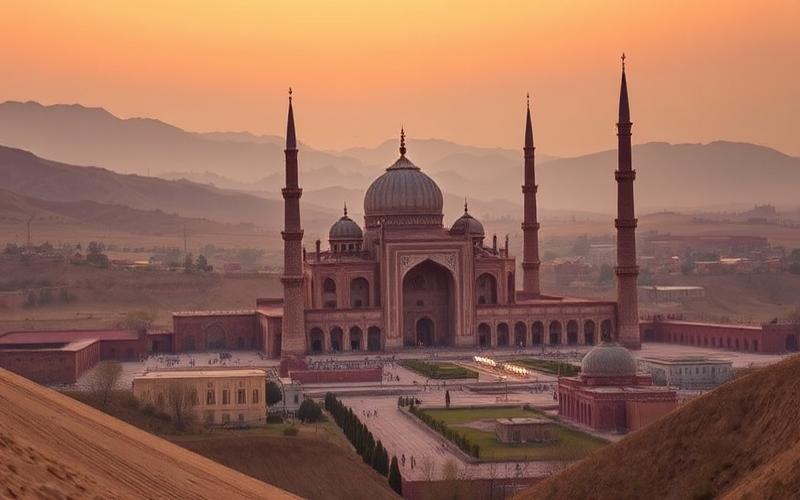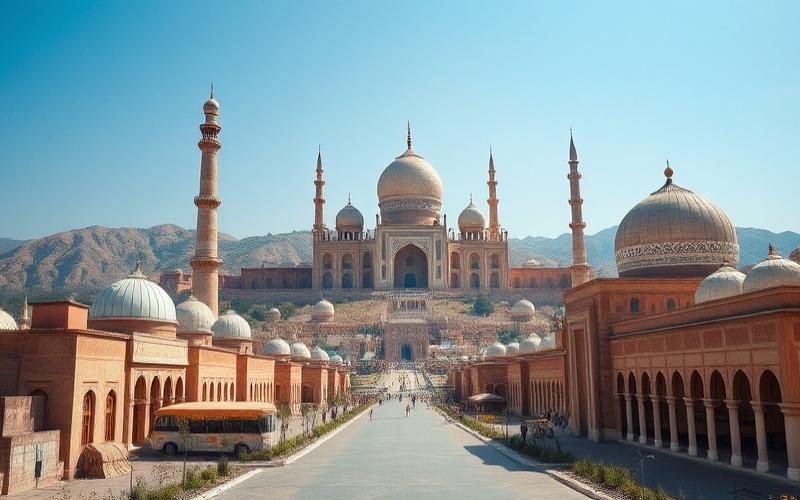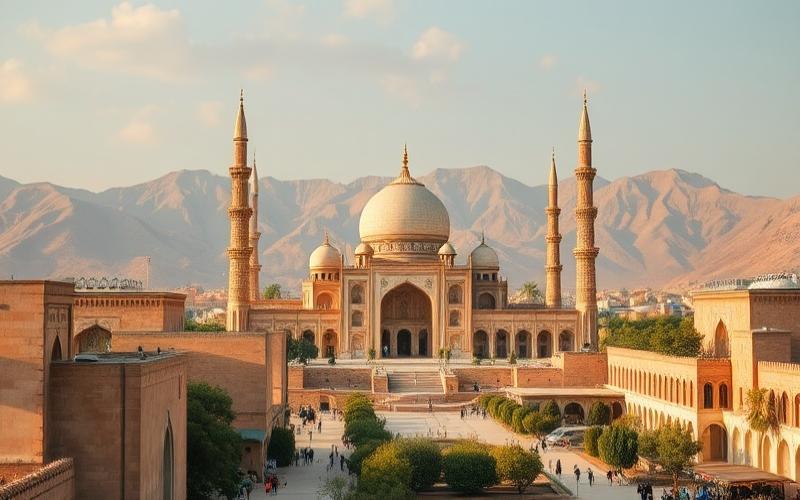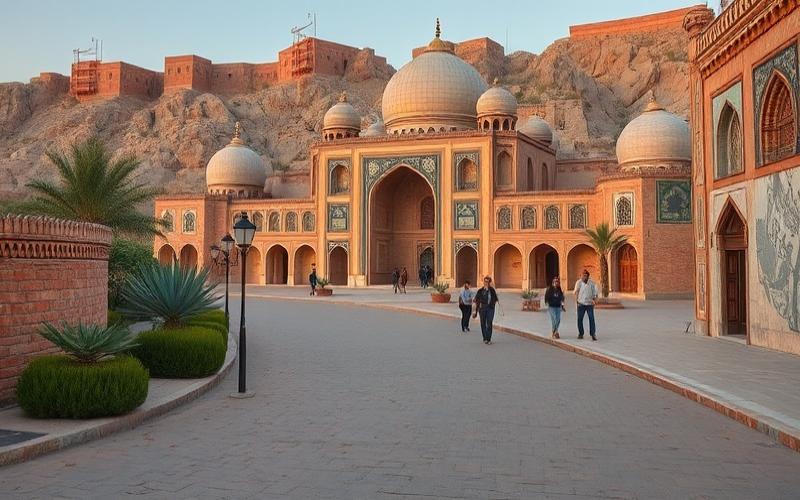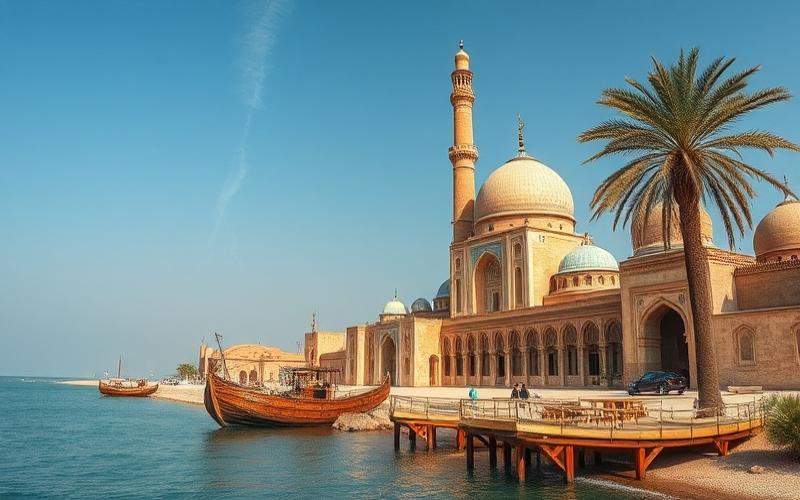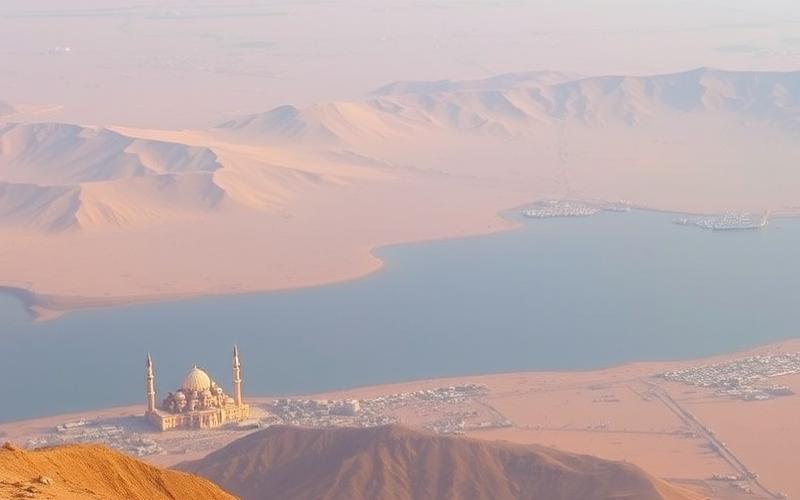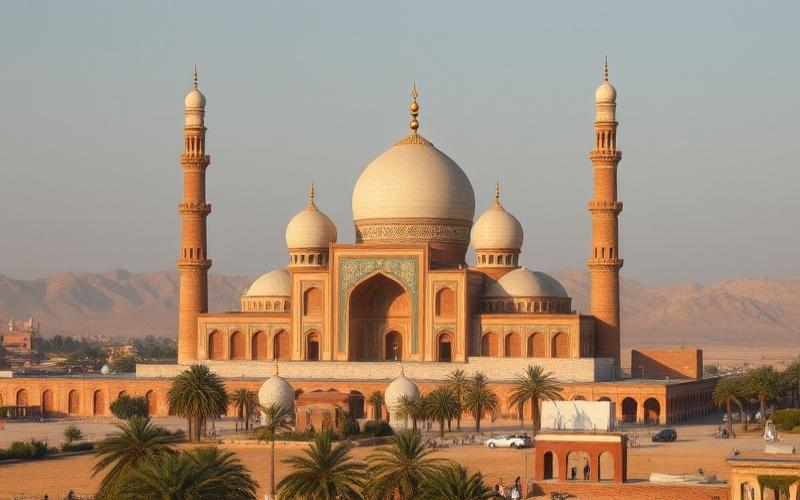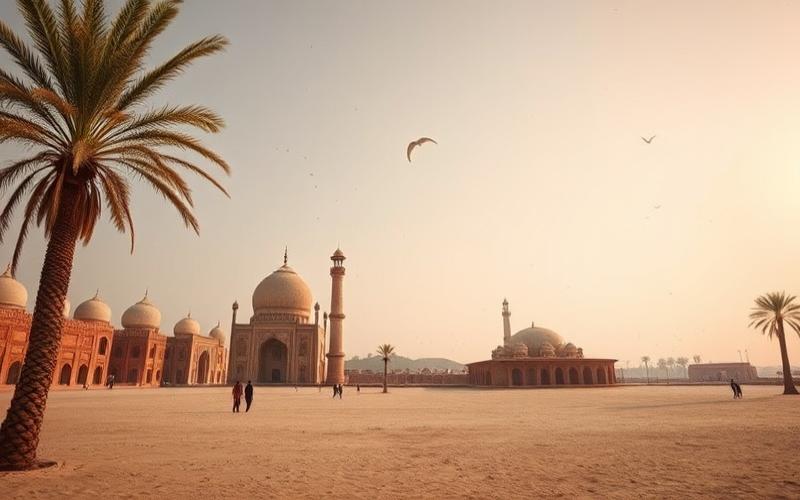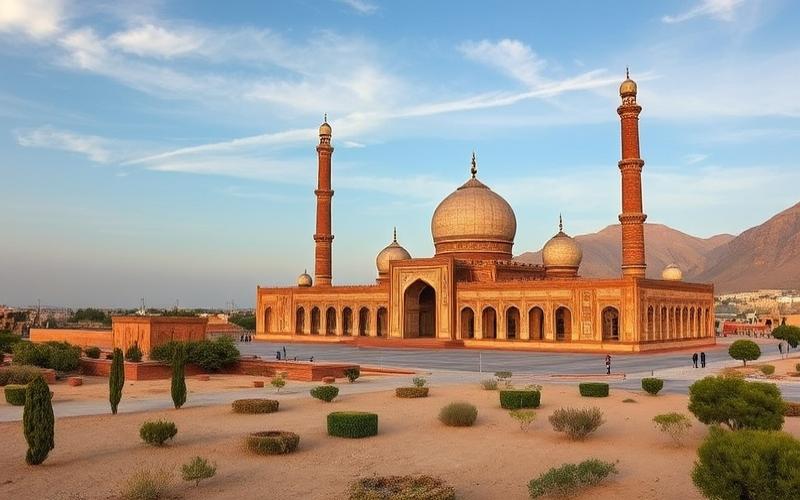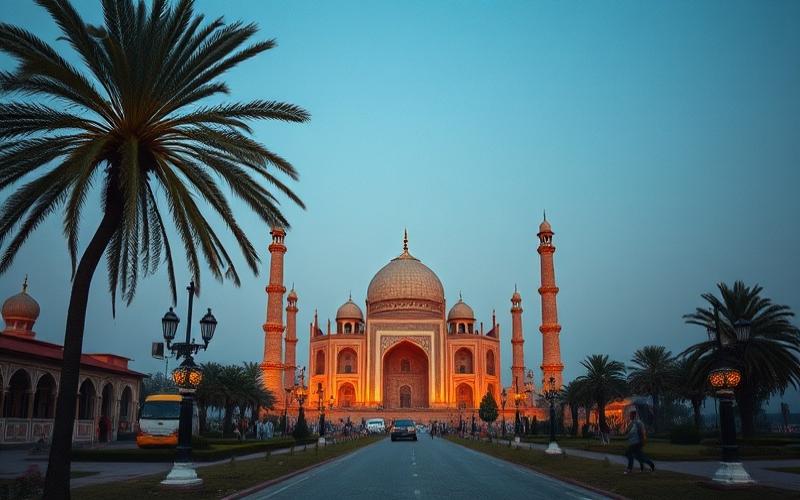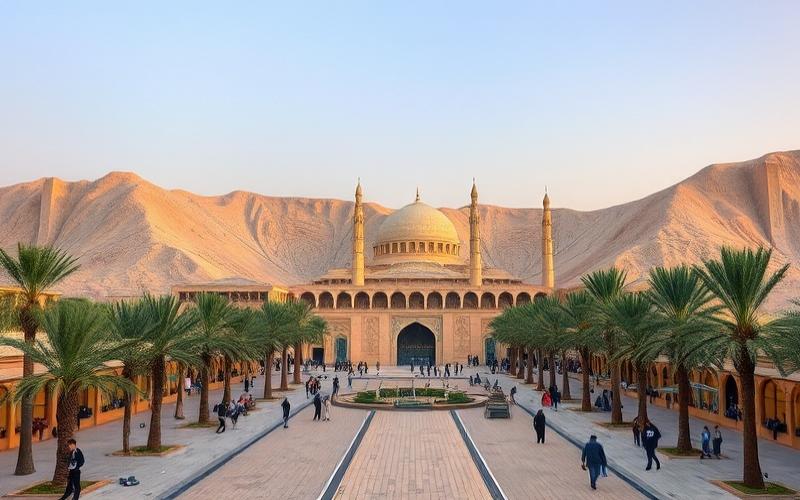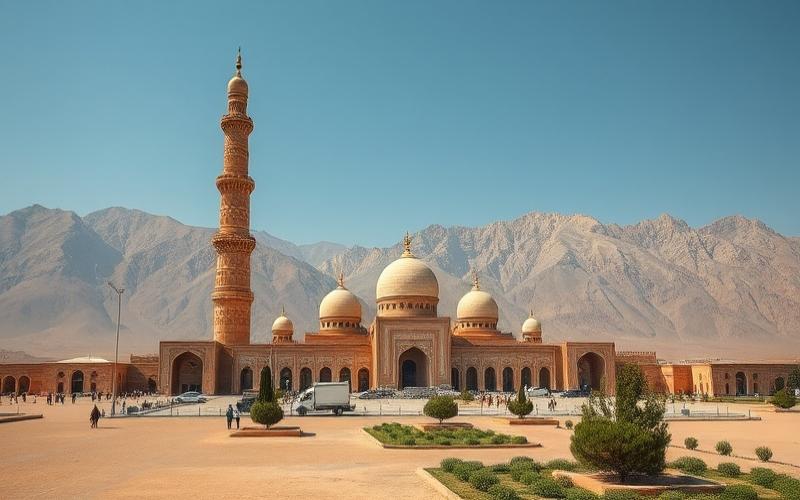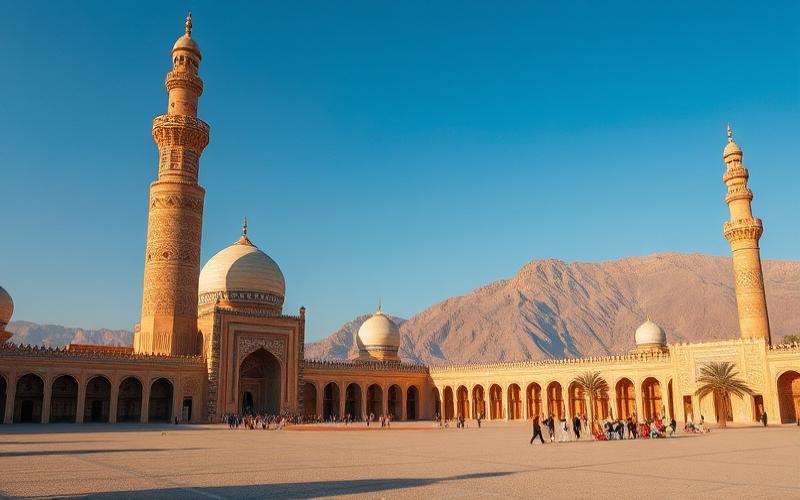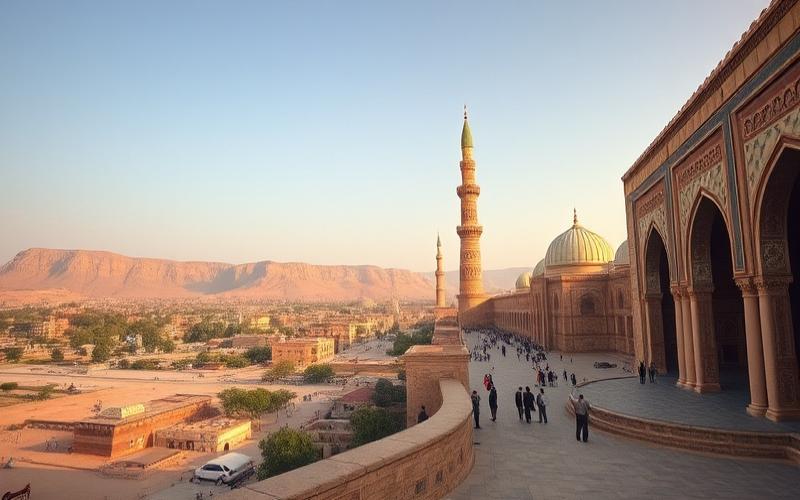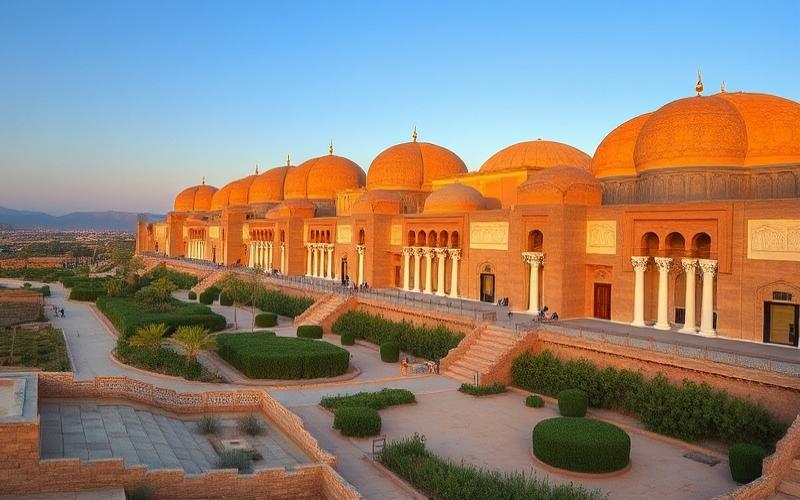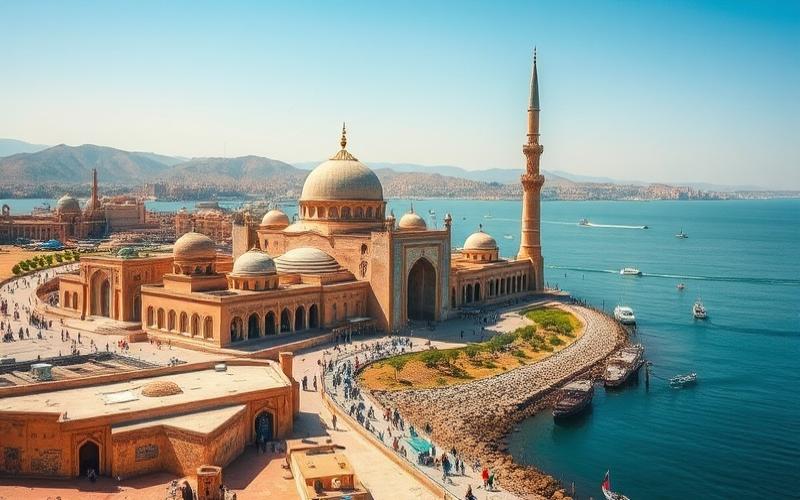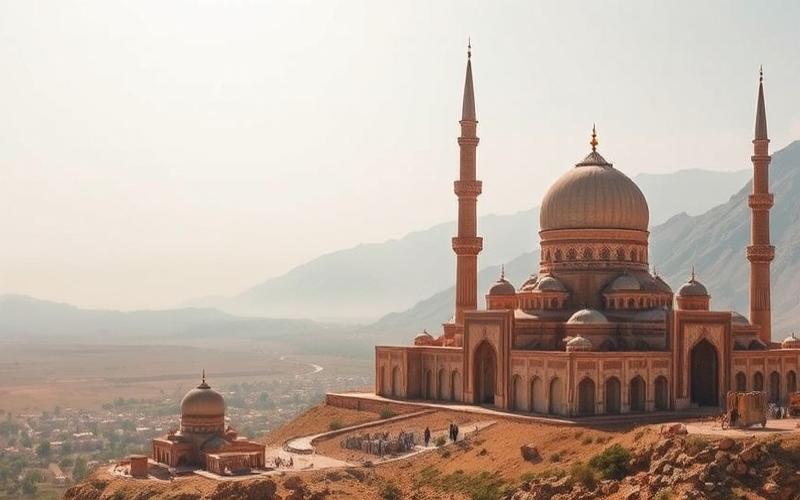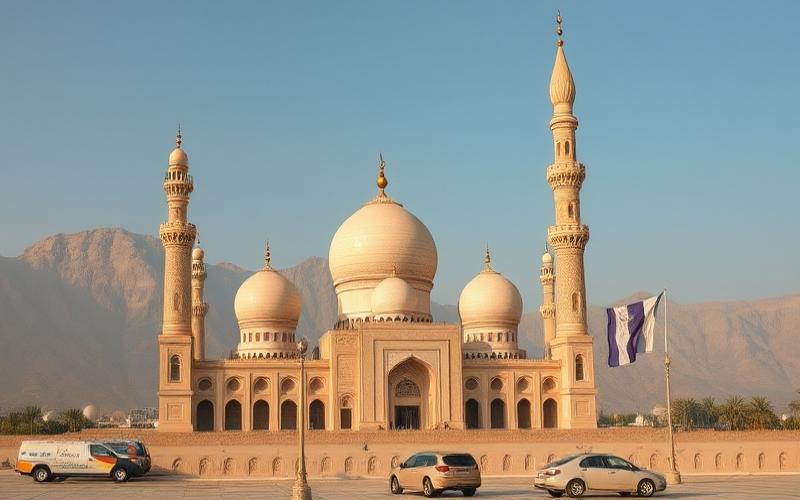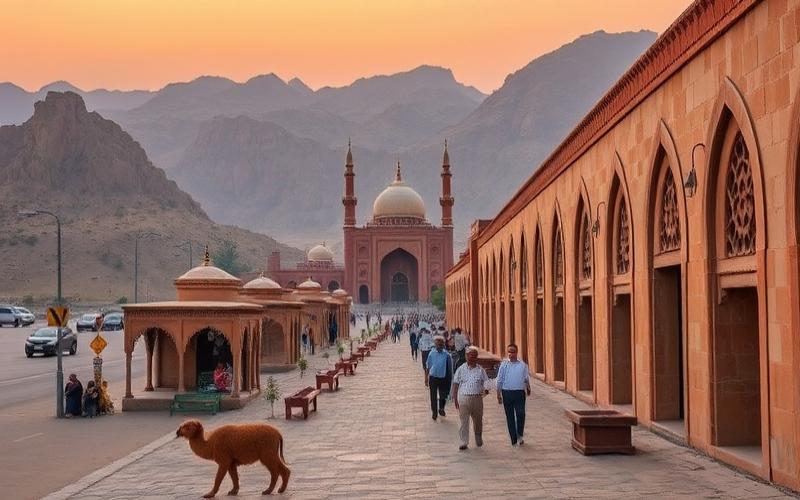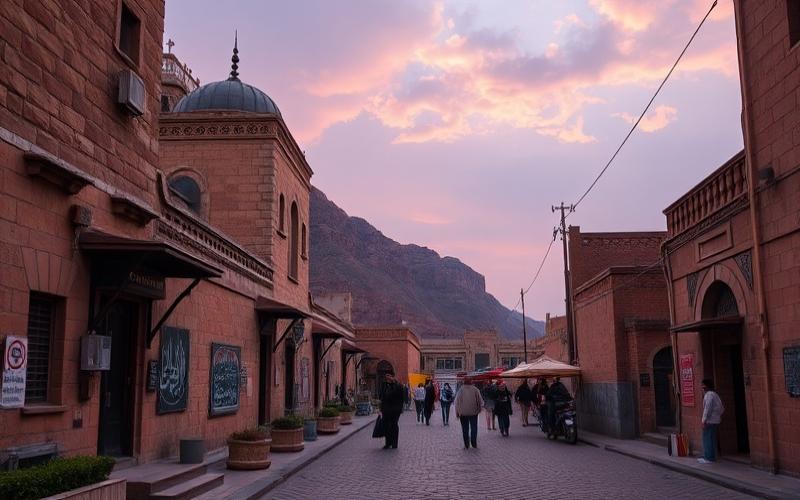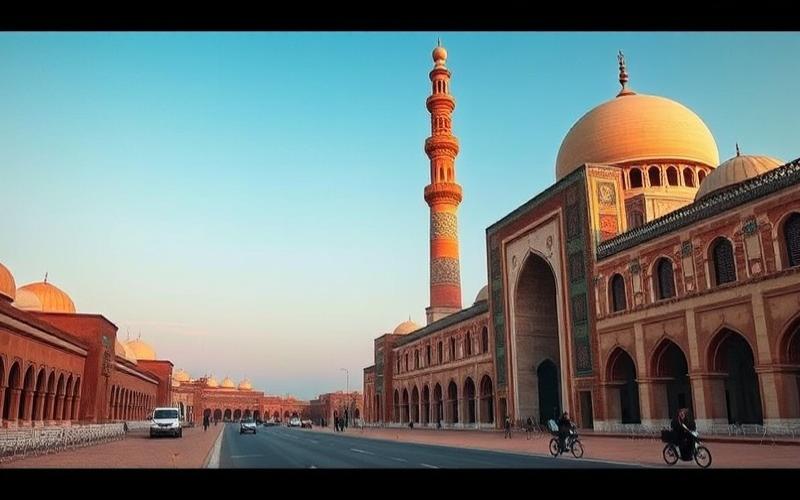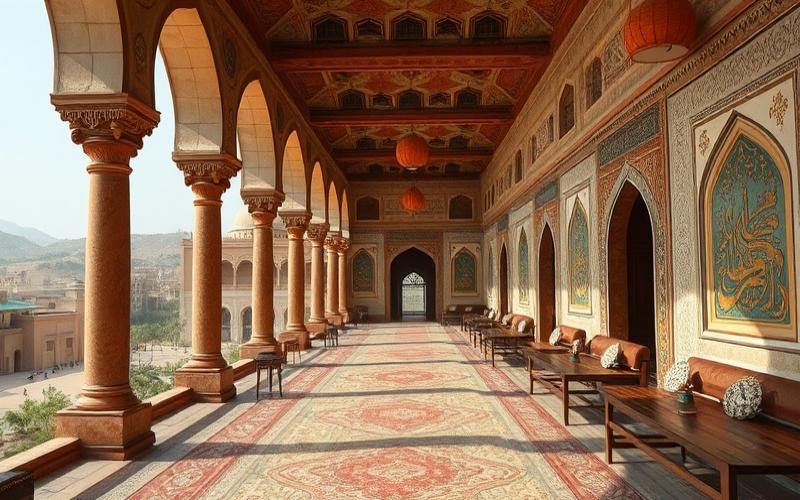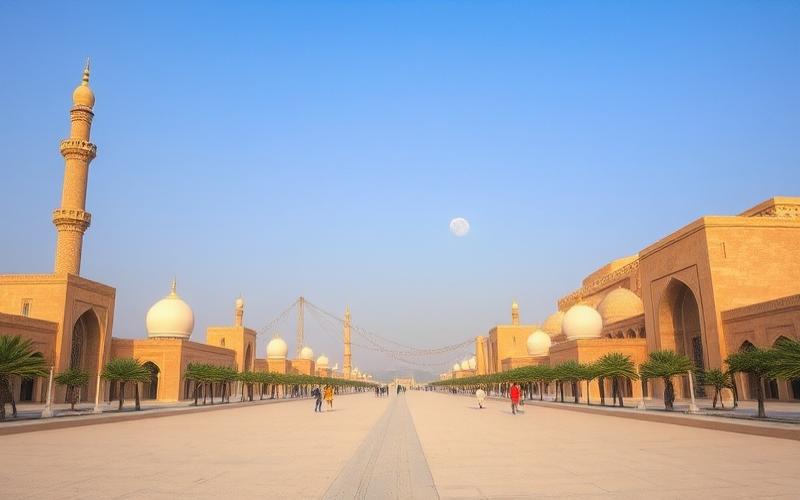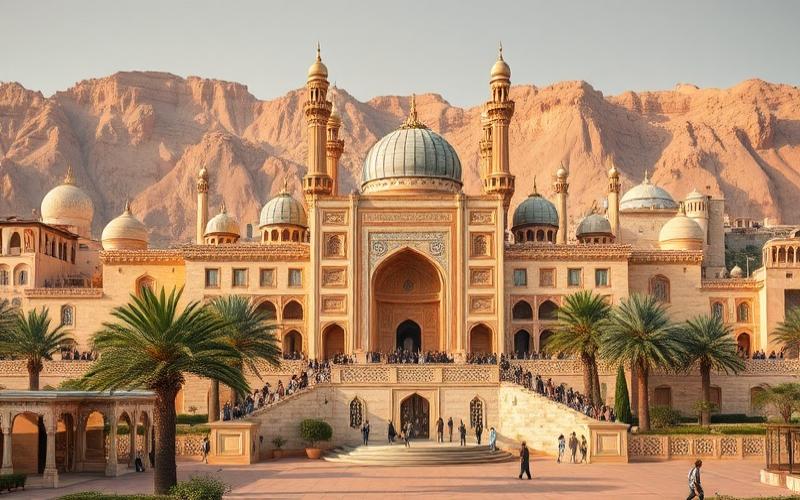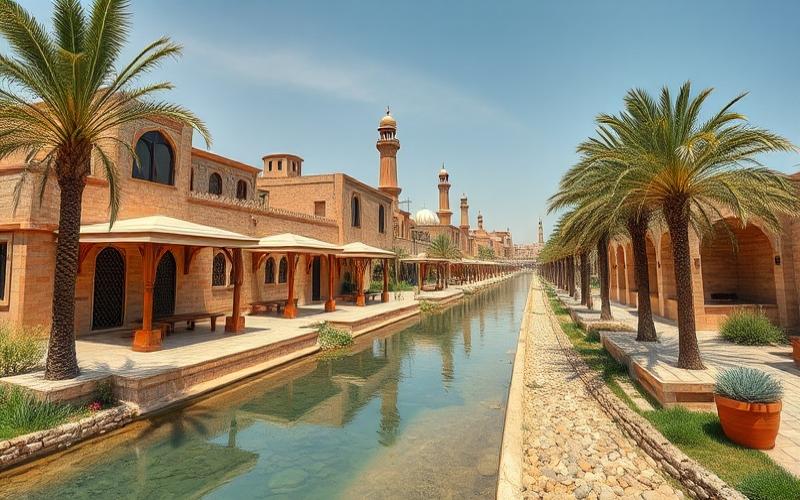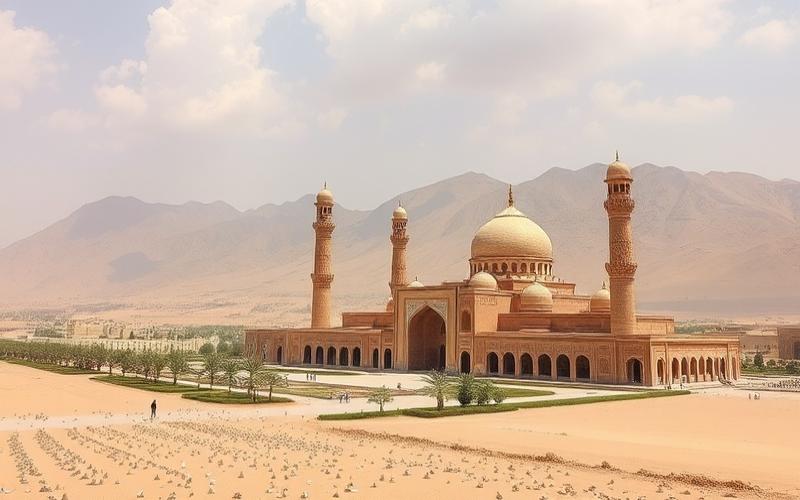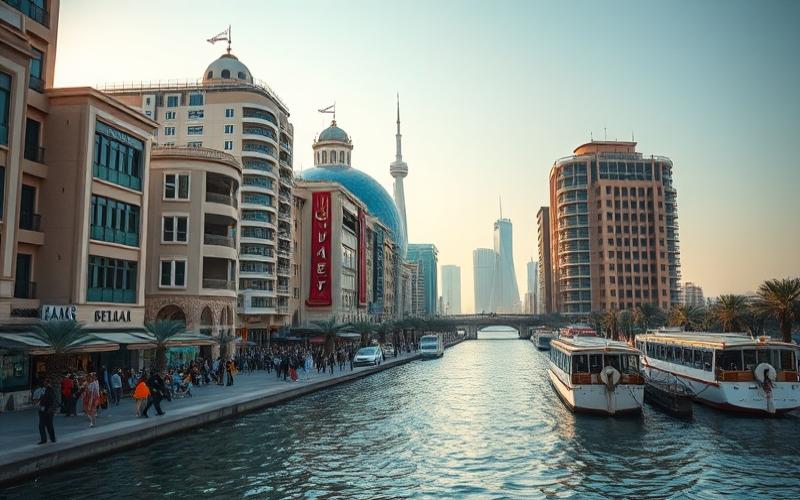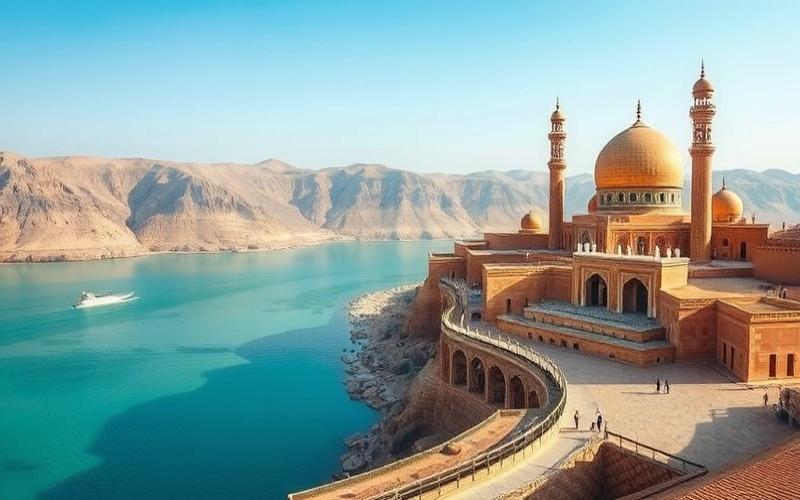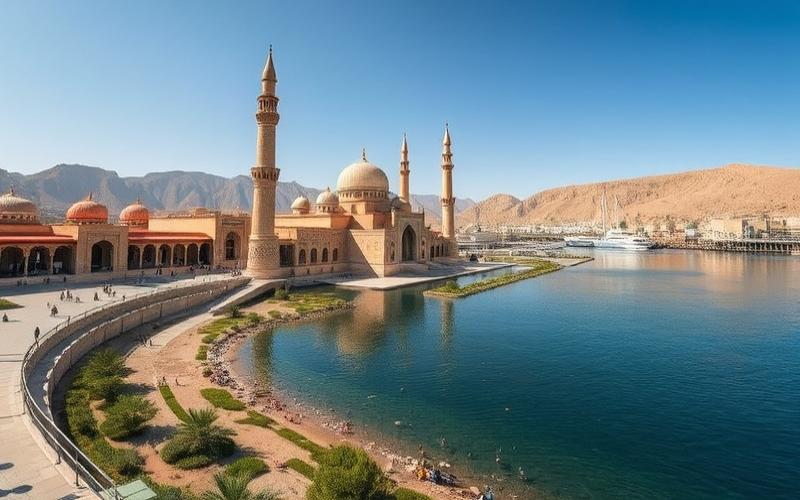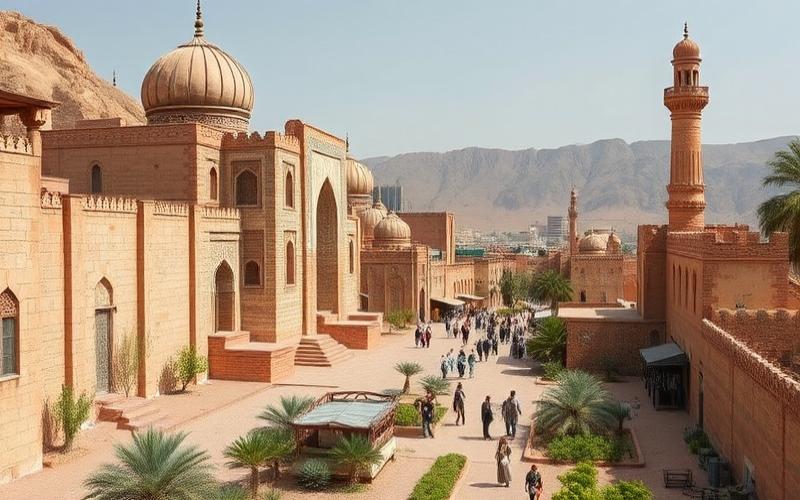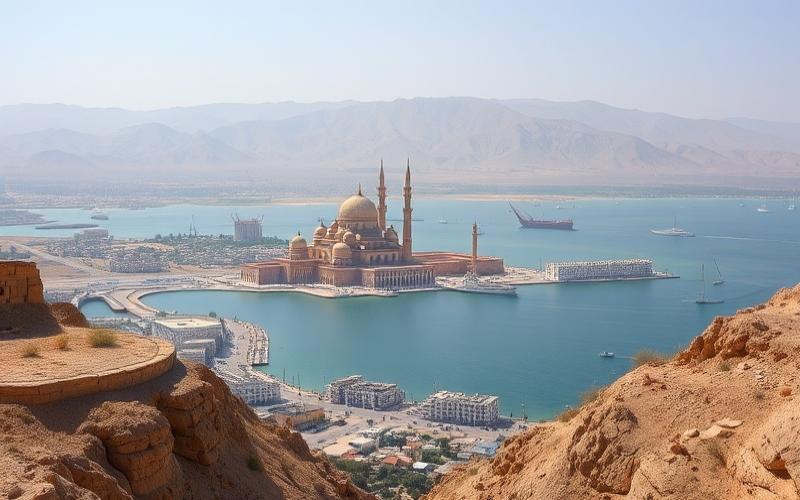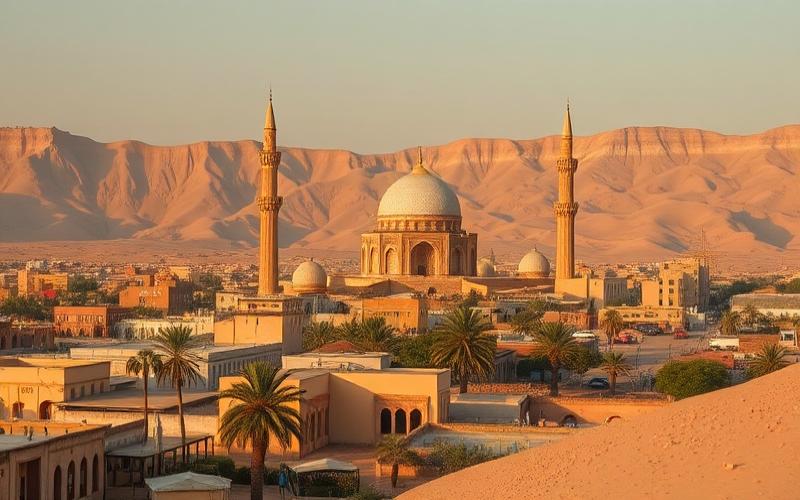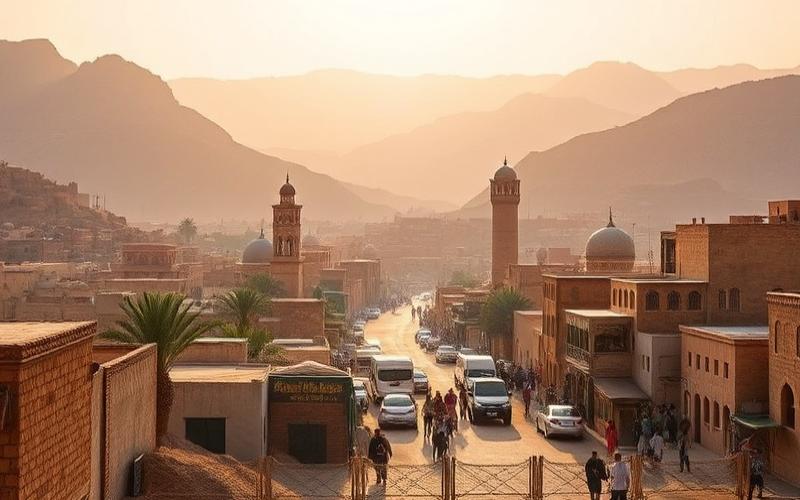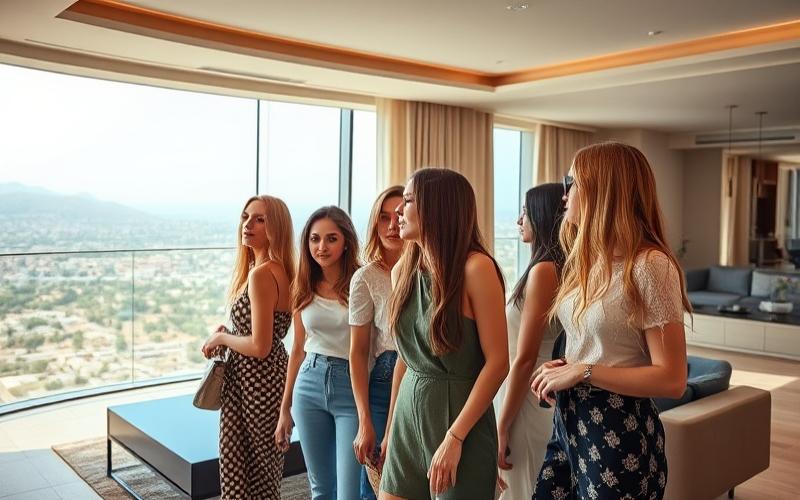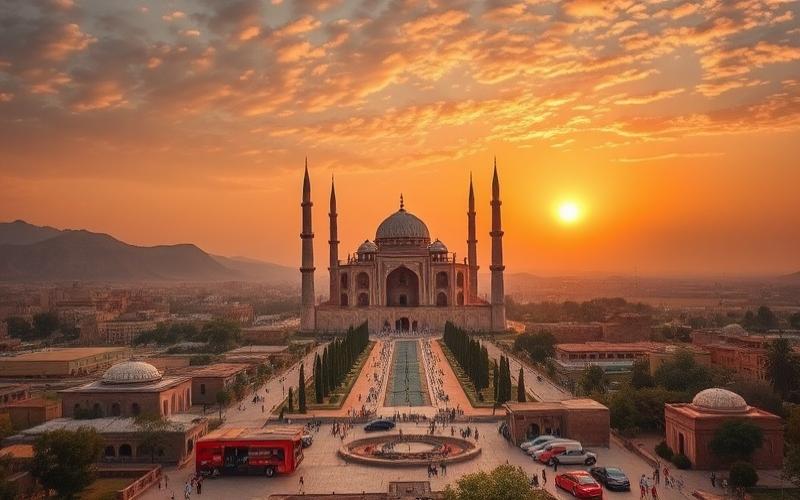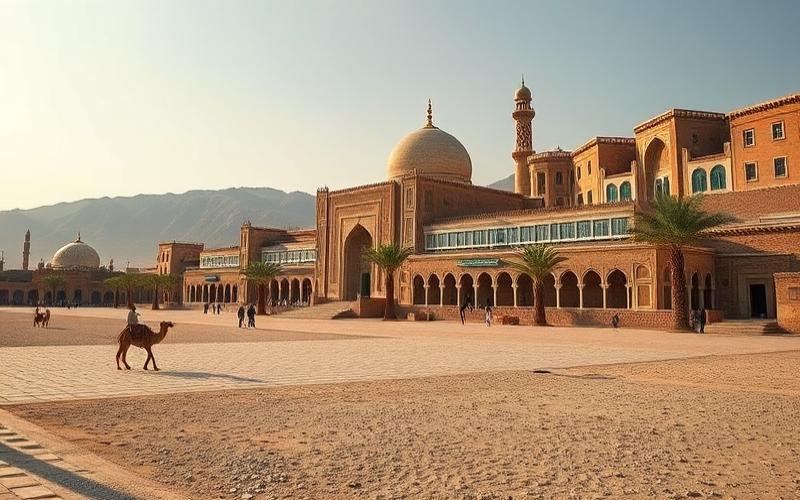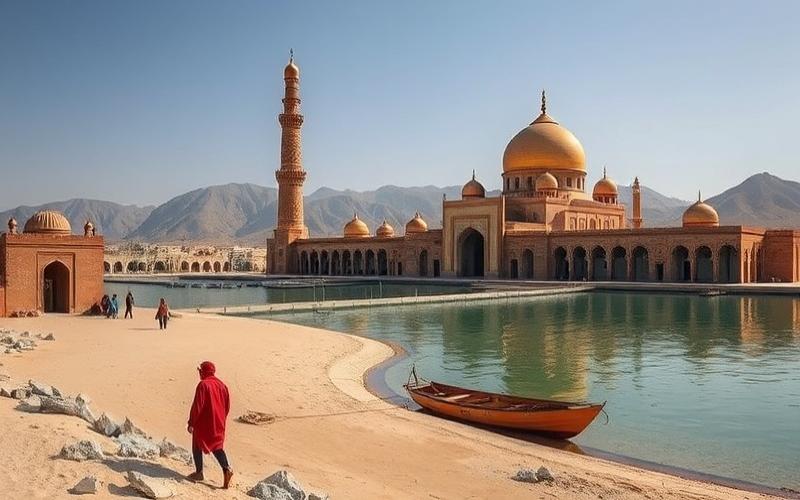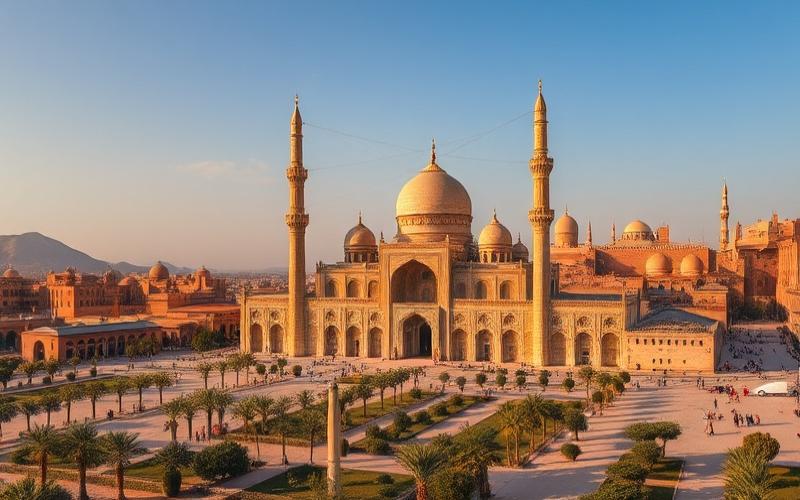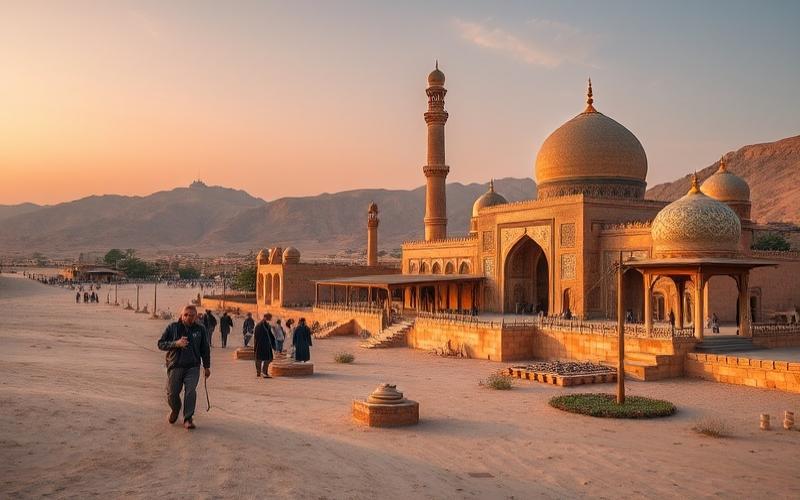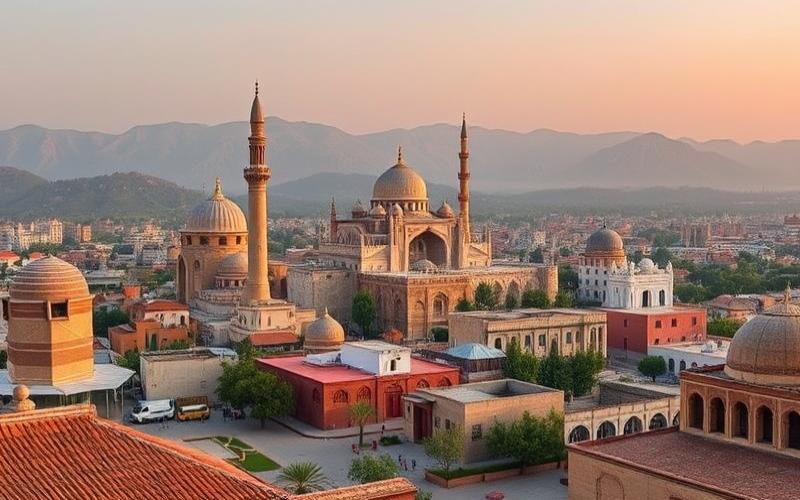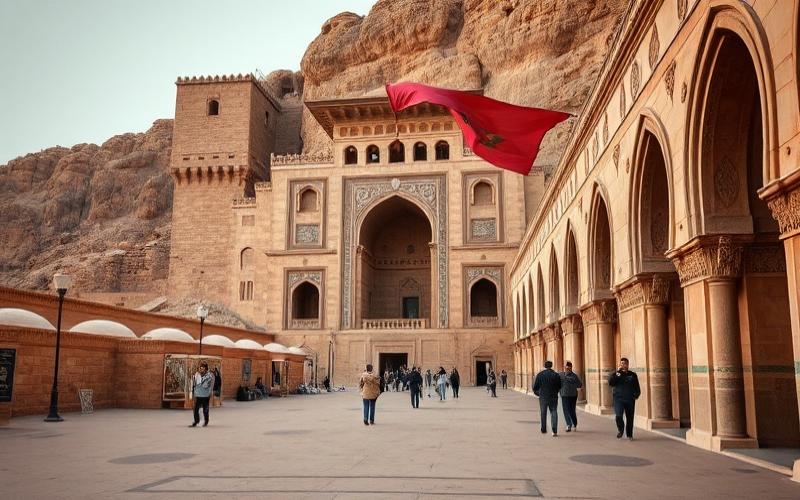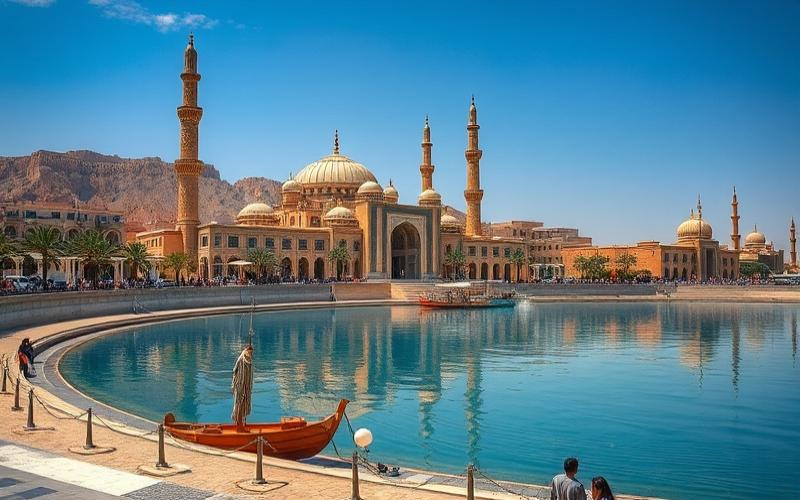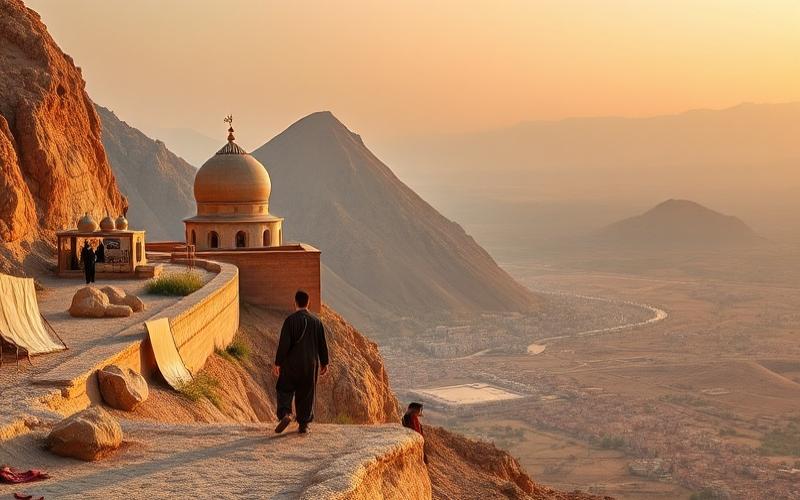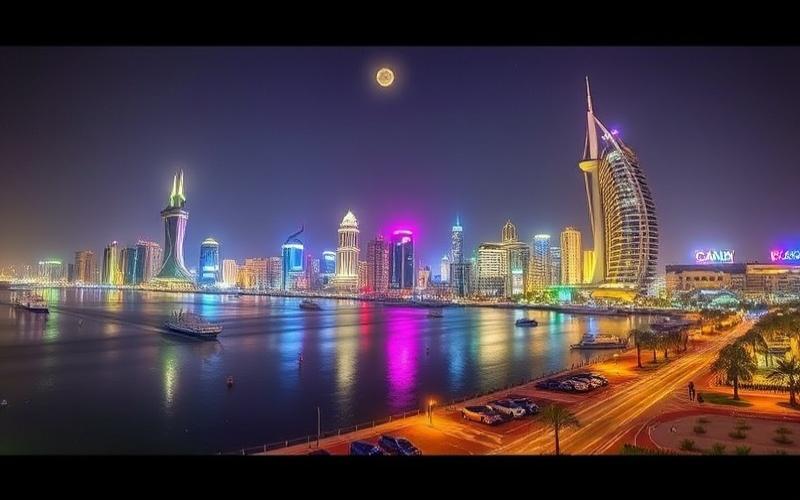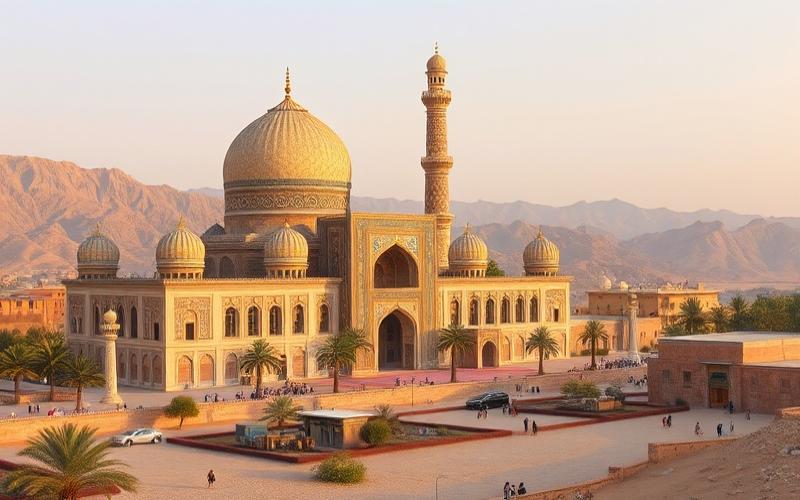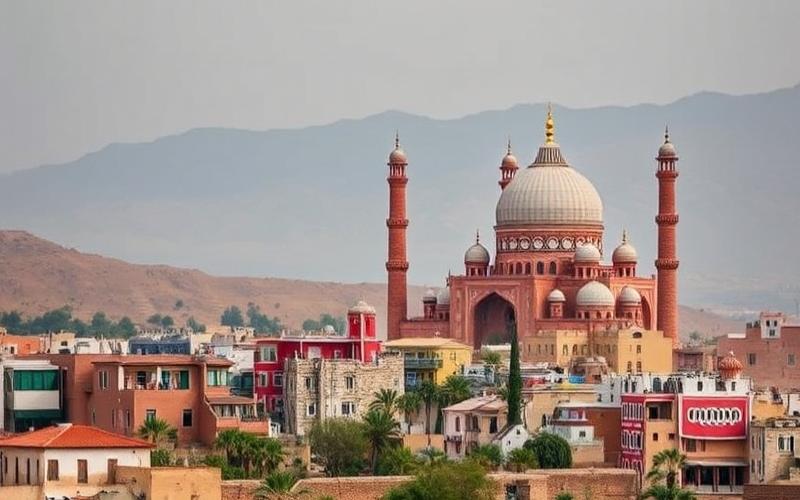
 Published on and written by Cyril Jarnias
Published on and written by Cyril Jarnias
In an economically booming country like Bahrain, culture plays an increasingly prominent role in shaping a rich and diverse national identity. Artist villages are emerging as cultural oases in the heart of this small Gulf kingdom, attracting attention from both investors and art enthusiasts. But beyond the glamour and aesthetics they display, these enclaves raise a crucial question: are they merely a cultural investment aimed at enriching the Bahraini artistic landscape, or do they conceal a quest for strategic profitability for those who fund them? This article explores the fascinating dynamic between art and economy in a context where tradition and modernity meet.
Artistic Community in Bahrain: A Look at Real Estate
The artistic community in Bahrain plays an increasingly structuring role in the development of the local real estate market, contributing to the emergence of dynamic neighborhoods and the enhancement of certain urban spaces.
Neighborhoods and Areas with High Artistic or Cultural Concentration:
- Adliya: An iconic neighborhood of the Bahraini art scene, known for its art galleries, cafes, designer workshops, and cultural spaces.
- Al Riwaq Art Space: Located in a green environment, this center hosts artist residencies, exhibitions, workshops, and events, creating a genuine platform for the local and regional artistic community.
- Manama Centre: Several private initiatives and galleries are establishing themselves here, enhancing the city center’s appeal for artists and art lovers.
Impact of Artistic Presence on Real Estate Prices:
- The presence of artists and cultural venues in a neighborhood generally promotes an increase in real estate value. The ripple effect is particularly observed in Adliya, where demand for housing and commercial spaces has grown alongside the development of cultural offerings.
- Real estate investors identify artistic neighborhoods as hubs with high profitability potential, driven by increased appeal among a young, creative, and cosmopolitan population.
Examples of Recent Real Estate Projects Popular with the Artistic Community:
| Project / Neighborhood | Main Characteristics | Appeal to Artists |
|---|---|---|
| Al Riwaq Art Space | Artist residencies, workshops, galleries, co-working spaces, regular events | Very High |
| Harbour Row | Luxury apartments, commercial spaces, proximity to cultural venues | High |
| Marassi Al Bahrain | Mixed development (residential, leisure, retail), flexible spaces, openness to innovation | Moderate |
| Adliya Art District | Numerous galleries, cultural cafes, architecture adapted for creation | Very High |
Government Policies and Private Initiatives:
- The Bahraini government, through the development of cultural hubs and the organization of festivals, encourages the settlement of artists and the creation of large-scale regional cultural events.
- Private initiatives like Al Riwaq Art Space focus on creating a complete ecosystem for artists (residencies, workshops, exhibitions, training).
- The proliferation of artist residencies, the organization of art fairs, and support for cultural innovation help strengthen the appeal of certain neighborhoods while altering the perception of real estate value among investors.
Effects on the Perception of Real Estate Value:
- Spaces incorporating an artistic or cultural dimension are perceived as more innovative, friendly, and attractive, which supports price increases and investment stability.
- The settlement of artists contributes to a renewal of real estate offerings (transformation of old buildings into workshops, lofts, or galleries), thereby stimulating demand.
Summary of Observed Dynamics:
- Rise in Cultural Investment: Residencies, festivals, workshops, and collaborative spaces create an environment conducive to innovation.
- Increased Profitability for Investors: Cultural neighborhoods see their appeal and prices rise due to residential and commercial demand.
- Structuring Policies and Initiatives: The state and private actors promote the establishment of artists, durably influencing the local real estate market.
The artistic presence in Bahrain acts as a lever for real estate enhancement, promoting urban transformation and neighborhood appeal while offering new opportunities for investors.
Good to Know:
In Bahrain, the artistic community exerts a notable influence on the real estate market, particularly in neighborhoods like Adliya and Manama where many artists and cultural venues are concentrated. These areas attract cultural investments that, in turn, increase real estate prices, making properties more attractive to investors. Recently, projects like the Bahrain Bay Development have integrated artistic creation spaces to appeal to this clientele, enhancing the neighborhood’s appeal. The government, through initiatives such as creating free zones for artists, encourages their settlement, which elevates the perception of real estate value. These dynamics make investing in these areas a potentially profitable option that goes beyond mere real estate speculation, relying on sustainable cultural enrichment.
Renovation of Artistic Farms: A Bet on the Future
The emergence of artistic farms in Bahrain dates back to the 1980s, a period when interest in local art grew alongside a desire to diversify the economy beyond oil. The absence of formal art schools prompted self-taught artists and enthusiasts to create alternative spaces for artistic expression and transmission. This context favored the transformation of traditional farms into places of creation, exhibition, and residency, thereby preserving architectural heritage while meeting the growth of the contemporary art scene.
Key Players in Renovation
- Private initiatives, led by artists, collectors, and foundations (e.g., RAK Art Foundation), motivated by the desire to support local creation and structure a dynamic artistic community.
- Public and semi-public organizations, sometimes in partnership with international institutions, who see these renovations as a means to promote the country’s image, attract cultural tourism, and strengthen territorial appeal.
- Architects and urban planners sensitive to heritage enhancement and the adaptation of spaces to new creative uses.
Specific Approaches
- Restoration of traditional materials (stone, wood, natural plasters) and preservation of original volumes.
- Integration of versatile spaces (studios, workshops, galleries, residency rooms) adapted to the needs of contemporary artists.
- Dialogue between local artisans and architects to ensure respect for ancestral skills and techniques.
Challenges Encountered
- Budget Constraints: High cost of restorations, difficulty in mobilizing private or public funds.
- Funding Needs: Necessity to find viable economic models, often through partnerships, patrons, or grants.
- Environmental Considerations: Management of energy consumption, choice of sustainable materials, preservation of surrounding natural spaces.
Table of Common Challenges and Solutions
| Challenge | Common Solutions |
|---|---|
| Budget Constraints | Partnerships, patronage, grants |
| Funding Needs | Mixed public-private models |
| Environmental Considerations | Local materials, renewable energies |
Expected Outcomes
- Cultural: Revitalization of the local art scene, intergenerational transmission of skills, emergence of new collectives.
- Economic: Development of cultural tourism, job creation, enhancement of real estate heritage.
Collected Testimonials
“Restoring a farm means preserving our history while giving young artists a space to express themselves freely.” (Local Developer)
“Working in a renovated farm allowed me to engage with my environment and draw from the memory of the place.” (Resident Artist)
“The collaboration between artisans and artists transformed the renovation into a true human and creative adventure.” (Partner Architect)
Analysis of Implications for the Contemporary Art Scene
These renovations foster the emergence of new artist collectives and collaborative practices by providing meeting and production spaces.
They help position Bahrain within the Gulf’s cultural destinations network, strengthening the international visibility of its creators.
They encourage artistic experimentation and cross-disciplinary interactions, essential for the renewal of the contemporary scene.
The renovation of artistic farms in Bahrain thus stands as a bet on the future: it combines heritage preservation, cultural innovation, and economic development, while reaffirming the central role of the artist in Bahraini society.
Good to Know:
Bahrain’s artistic farms have emerged in recent years, stimulated by a growing interest in preserving cultural heritage while offering innovative spaces to artists. Driven by public-private partnerships, these renovations often involve the Ministry of Culture and private patrons, motivated by promoting local art and developing sustainable cultural tourism. To reconcile architectural tradition with functional modernity, these projects aim to preserve typical elements of the original structures while fitting out workshops and galleries adapted to contemporary needs. However, renovators face significant financial challenges, requiring funds to meet growing ecological standards, while authenticity must be carefully maintained. These efforts promise to revitalize the Bahraini art scene, attracting artists and visitors, and fostering new creative collectives. Testimonials from artists who have joined these places reveal a certain optimism regarding the positive impact of these renovated farms, both in terms of artistic creation and local economic stimulation.
Creative Eco-Villages: A New Breath for Art in Bahrain
Creative eco-villages in Bahrain embody a new dynamic where ecological practices and artistic innovation converge in a community framework. These villages integrate sustainable infrastructure while fostering cultural expression, thus offering an alternative model for the local art scene.
Integrated Ecological Practices:
- Use of recycled materials for the construction of workshops, galleries, and artist housing.
- Adoption of renewable energy sources such as solar panels or micro-wind turbines, allowing artists to create with a reduced carbon footprint.
- Systems for responsible management of artistic waste, prioritizing sorting, composting, and reuse in collective works.
- Shared green spaces (community gardens) that promote biodiversity and also serve as sources of inspiration for artistic projects.
Initiatives Combining Art & Sustainability:
- Participatory workshops where residents and artists create installations together using recovered or natural objects.
- Outdoor artistic projects that highlight local landscapes while raising awareness about respecting natural heritage.
- Artist residencies focused on experimentation with ecological techniques (plant-based dyes, sculpture with wood from sustainably managed forests).
Educational Programs & Environmental Awareness:
- Regular organization of open conferences on creative ecology.
- School programs inviting local students to collaborate with artists around recycling or land art.
- Interactive guided tours presenting the village’s energy innovations and their concrete impact.
| Sustainable Practice | Artistic Application |
|---|---|
| Recycled Materials | Collective monumental sculptures |
| Renewable Energies | Electrically autonomous workshops |
| Shared Gardens | In situ performance / ephemeral works |
| Composting/Selective Sorting | Textile creation using natural fibers |
Impact on the Bahraini Art Scene:
- Promotes innovation, as material constraints stimulate artists’ technical and aesthetic inventiveness.
- Offers an inclusive space where collaborations between local and international artists emerge, strengthening regional cultural influence.
- Constant interactions with residents anchor these projects in the local social fabric: co-creation of public works, seasonal artistic festivals integrating Bahraini traditions.
Socio-Economic Assessment:
Fruitful Cultural Investment:
- Eco-villages position Bahrain as a regional pioneer in integrating art/sustainability; they attract specialized critics, cultural patrons, and a new audience sensitive to environmental issues.
Profitable Economic Returns:
- Tourism diversification through the emergence of “cultural ecotourism,” generating direct (accommodation/residencies) or indirect (sale of local artworks) revenue.
- Managed real estate development around the villages due to their growing appeal among an international clientele seeking ecological authenticity.
Experience shows that these villages are not limited to symbolic investment alone: they also offer a credible economic lever for Bahrain while revitalizing its art scene through a resolutely forward-looking approach.
Good to Know:
Creative eco-villages in Bahrain offer an innovative framework for artistic expression by integrating ecological practices into their infrastructure, such as using solar panels and wind energy to power workshops, or employing recycled materials in creating artworks. These initiatives actively contribute to environmental awareness through educational programs aimed at the local community, thereby encouraging enhanced interaction between artists and residents. By fostering artistic innovation and supporting local and international artists, these eco-villages inject new life into the Bahraini art scene. Moreover, these initiatives are not limited to cultural enrichment alone but also generate positive economic returns by attracting tourists and investors interested in the sustainable model they propose, thus contributing to the region’s economic growth.
Disclaimer: The information provided on this website is for informational purposes only and does not constitute financial, legal, or professional advice. We encourage you to consult qualified experts before making any investment, real estate, or expatriation decisions. Although we strive to maintain up-to-date and accurate information, we do not guarantee the completeness, accuracy, or timeliness of the proposed content. As investment and expatriation involve risks, we disclaim any liability for potential losses or damages arising from the use of this site. Your use of this site confirms your acceptance of these terms and your understanding of the associated risks.

